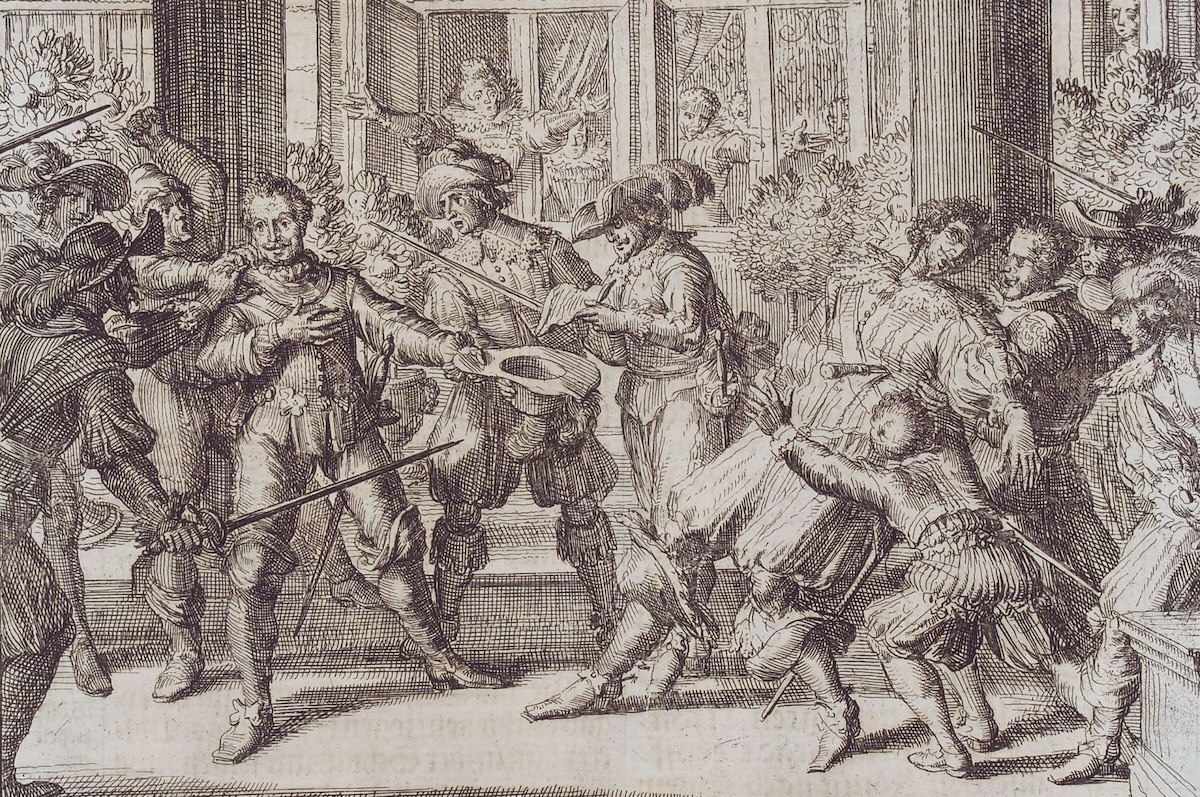‘The Scapegoat’ by Lucy Hughes-Hallett review
The Scapegoat: The Brilliant Brief Life of the Duke of Buckingham by Lucy Hughes-Hallett picks through the fragments of George Villiers, James VI & I’s favourite mistake.

In spring 1622 King James VI & I’s favourite, George Villiers, then marquess of Buckingham, toured Fontainebleau Palace with the Flemish artist and diplomat Peter Paul Rubens. Admiring Leonardo’s Mona Lisa, the Englishman ‘asked if he might have it’ but was firmly rebuffed. ‘Unaccustomed to having his requests denied, Buckingham was put out, but the day was otherwise pleasant.’ Evincing Buckingham’s audacity as well as his connoisseurship, this instance is one of numerous scenes vividly recreated in Lucy Hughes-Hallett’s The Scapegoat. More a cluster of evocative vignettes than a conventional biography, her life of Buckingham is presented in more than 100 chapters, with some – such as ‘More Advice on Bargaining’ – extending to barely 100 words, while others – such as ‘Houses’ – supplying a chronological list of property acquisitions. As Hughes-Hallett indicates at the outset: ‘This book is about big things – peace and war, Parliament and despotism. It is also about small things – babies, jewels, anemones … aiming to make a collage that conjures up a life in all its complexity.’
Reading The Scapegoat sometimes feels like reviewing the author’s informal working notes. Hughes-Hallett’s prose style shifts from narrative description to imaginative speculation; when discussing how Buckingham and Prince Charles sought to extricate themselves from Philip IV’s court in Madrid in July 1623, she presents ‘two possible guessed-at versions of their all-night conversations’.
Rendered in luxuriant detail are the flamboyant personalities, material magnificence and complex hierarchies that comprised court culture under James VI and I, Charles I, Louis XIII of France and Philip IV of Spain. Regular modern interjections also echo Hughes-Hallett’s novel Peculiar Ground (2017), which moves in focus from Oxfordshire in the 1660s to Berlin in the 1970s. Chronological shifts evidently attract the author, who posits that comparing a portrait of Buckingham by William Larkin with another executed five years later by Anthony van Dyck is ‘to have the dizzying experience of a ride in a vastly accelerated time machine’. Confronted by centuries of salacious speculation regarding the nature of Buckingham’s relations with James, Hughes-Hallett is forthright in insisting that, since theirs was ‘the kind of love that ambushes at first sight’, it ‘doesn’t much matter’ whether sexual intercourse occurred – even if ‘the not-mattering is alien to the twenty-first century mind’. Less compelling – at least in terms of appreciating the scale of Buckingham’s political influence – is her observation that she started working on The Scapegoat in 2020 at a time when ‘large decisions about the way Britain was ruled were being made by one of the prime minister’s staff, Dominic Cummings’, who ‘seemed to come, as Buckingham did, from nowhere’ and then ‘became a scapegoat, as Buckingham did four hundred years before’. Such a comparison seems needlessly flattering to Cummings.
Regarding the book’s title, whether Buckingham’s singular role in early Stuart politics – as disruptive as it was dazzling – is most fully encapsulated by the epithet ‘scapegoat’ is also unclear. There was no shortage of real scapegoats during his period of dominance, such as John Digby, earl of Bristol – publicly and unfairly blamed for the liquidation of the ‘Spanish Match’ projected between Prince Charles and the Infanta María Ana. Nor, in terms of ‘the brilliant brief life’, was Buckingham’s life especially brief, since he was days short of his 36th birthday when fatally stabbed by John Felton in Portsmouth in August 1628. Haunting early Stuart history – offering tempting counterfactual futures – was the much briefer life of James’ eldest son and heir, Prince Henry, who died of typhoid fever in 1612 aged 18. Although the many spectacular futures prophesied for Henry were extinguished by his unexpected demise, it seems unlikely that he would have formed such a deferentially lamblike – and ultimately dangerous – attachment to his father’s ambitious favourite. Returning to Buckingham, his brilliant, charismatic capacity to define an era might, however, bear comparison to that of the late Princess Diana who was 36 at the time of the fatal car crash in Paris.
Diana cannot, however, be ‘justly accused of terrible things – of causing thousands upon thousands of deaths by his reckless war-making’ as Buckingham is (correctly) charged here. On Charles I’s behalf, Buckingham pursued a foreign policy that was diplomatically reckless and strategically incompetent, resulting in a massive loss of human life and national humiliation. Regarding his attempt to seize the Île de Ré in France in 1627, for example, Hughes-Hallett provides a single-sentence paragraph: ‘The story of Buckingham’s assault is ghastly.’ Citing a litany of strategic and logistical errors, Hughes-Hallett also identifies ‘an awful repetitiveness to Buckingham’s story in the last three years of his life’; alongside mass fatalities, ‘naval-military operations undertaken with no clear idea of what advantage they might serve, or how they were to be financed’.
Hence Hughes-Hallett’s assertion, at the outset of The Scapegoat, that ‘Buckingham was a man who lived a woman’s life’ is implausible. As the late Roger Lockyer observed in his biography, Buckingham (1981) – on which Hughes-Hallett relies extensively – a ‘playboy-favourite’ was relatively harmless, but in the duke’s case ‘it was his political, and above all, his military power, that made him so feared’. More generally, Hughes-Hallett tends to elevate allusive scene-setting over summative assessment, concluding the book with a whimsical discussion of Gerrit van Honthorst’s depiction of Buckingham as Mercury in a painting completed after the duke’s death. Now hanging in Hampton Court, it presented ‘Buckingham as he would like to have been remembered … not as the instigator and loser of futile wars; but as a benign impresario’.
-
The Scapegoat: The Brilliant Brief Life of the Duke of Buckingham
Lucy Hughes-Hallett
Fourth Estate, 640pp, £30
Buy from bookshop.org (affiliate link)
Clare Jackson is Honorary Professor of Early Modern History at Trinity Hall, Cambridge University.






